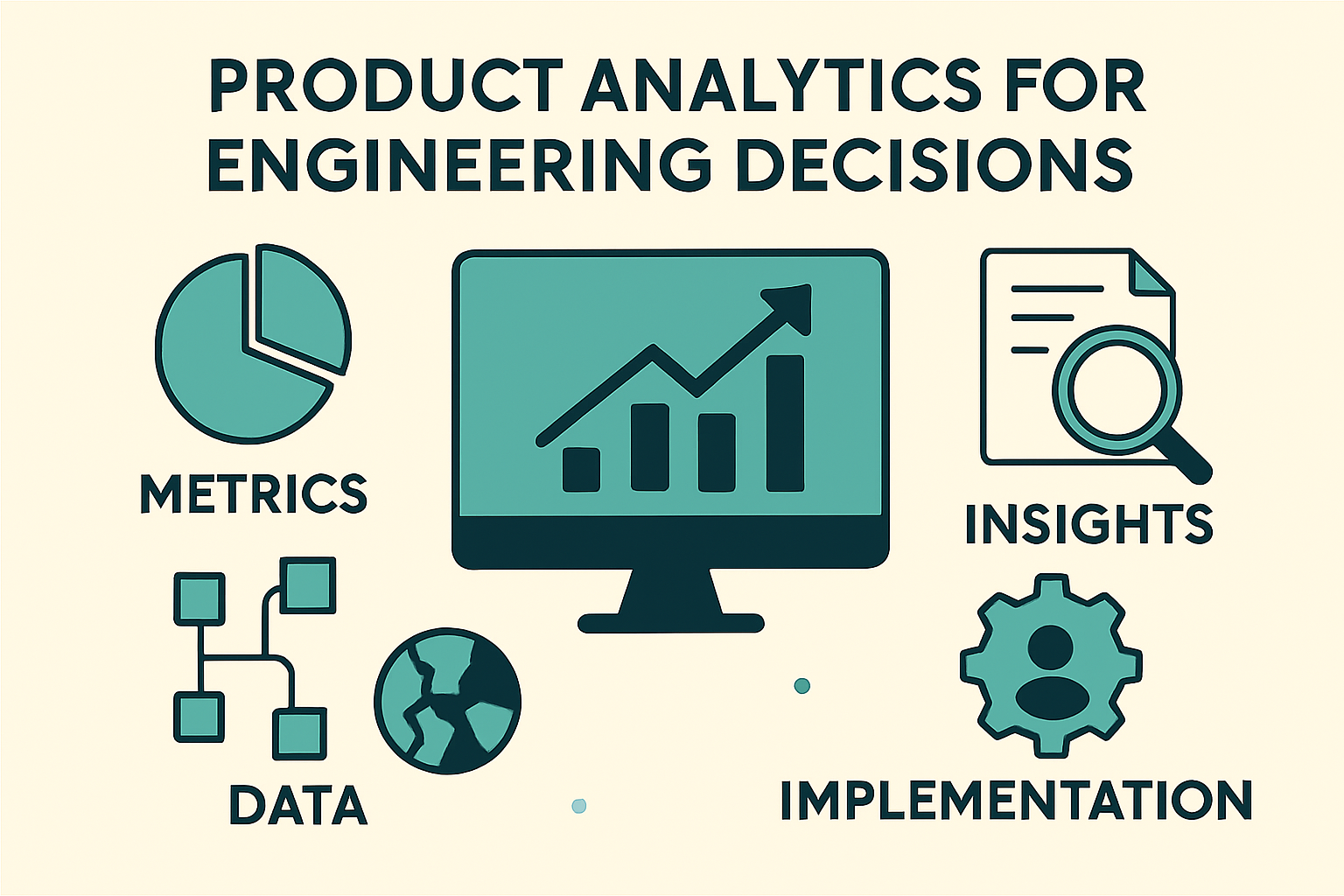Building products isn’t just about writing code—it’s about solving the right problems with purpose. Product analytics bridges the gap between engineering output and business outcomes, helping teams make smarter, user-focused technical decisions.
Why Product Analytics Matter to Engineers
Engineers often work downstream of strategy, yet they play a key role in shaping user experience and product success. Product analytics shifts this dynamic by enabling engineers to:
Understand how users engage with features they build.
Identify performance bottlenecks in key flows.
Prioritize issues based on user impact, not just severity.
Validate technical decisions using real usage data.
When analytics are available, engineering becomes not just execution—but continuous optimization.
Key Metrics That Guide Engineering
Here are the most relevant product analytics metrics for engineering teams:
Feature adoption rates – Are users actually using the features built?
Time-to-action – How quickly users reach key milestones?
Error and failure rates – Where do users encounter friction?
Latency and load times – How do performance issues affect user behavior?
Churn drivers – Which technical issues cause users to leave?
These metrics help engineering teams focus on high-leverage improvements.
Making Analytics Actionable
Data is only useful when it drives decisions. Here’s how engineering teams can leverage analytics:
Before development: Use past usage trends to shape what features to build next.
During development: Track how new features perform in beta or staged rollouts.
Post-launch: Use dashboards to monitor adoption, errors, and engagement in real-time.
Feedback loops become shorter. Bugs get prioritized based on user reach. Technical debt is assessed by business impact.
Tools That Empower Product-Focused Engineers
To keep analytics in engineers’ hands, the tools must be simple and integrated. Common choices include:
Mixpanel, Amplitude, Heap – For user behavior tracking.
Datadog, New Relic – For performance and backend metrics.
PostHog, Segment – For open-source or privacy-first setups.
Integrations with CI/CD pipelines and alert systems keep engineers informed without context- switching.
Driving a Data-First Engineering Culture
Building a culture where engineers embrace analytics means:
Pairing analytics reviews with sprint
Making success criteria measurable (e.g., adoption rate targets).
Encouraging engineers to ask ―What problem are we solving? more than ―What feature are we building?
It’s a shift from output to outcome, from code quality alone to user impact.
Conclusion
When engineering teams embrace product analytics, they stop guessing and start leading. Data becomes their compass—not just for fixing bugs, but for creating value. In a fast-paced product environment, being data-driven isn’t just helpful—it’s essential for building better, more impactful software.





